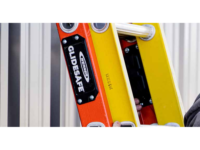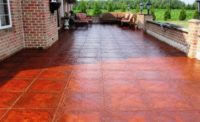Walls and ceilings are some of the most essential structural elements of any building–from defining the space, to bearing the load, to providing shelter and security. With this in mind, complying with the latest building codes is crucial, now more than ever, for ensuring the safety, durability and resiliency of wood buildings.
In the interiors and exteriors industry, professionals are tasked with a wide range of duties, dealing with drywall, acoustics, framing, fireproofing and insulation, just to name a few. On top of these responsibilities, determining and adhering to building code compliance can often be a tedious and time-intensive task.
Modern technology already helps to simplify many aspects our daily lives with the touch of a button, and now the same can be said for complying with modern building codes. To help make this important process more user-friendly, the American Wood Council (AWC) has developed free, web-, mobile- and tablet-based applications to streamline the process of ensuring new and existing buildings comply with the latest building codes.
The Connection Calculator provides users with an app-based approach to calculating capacities for single bolts, nails, lag screws and wood screws per the National Design Specification (NDS) for wood construction. It offers a convenient way to determine both lateral and withdrawal connection values, and includes adjustment factors for temperature, wet service, varying load duration and end grain. Additionally, single and double shear capacities can be determined, as well as wood-to-wood, wood-to-concrete and wood-to-steel connections, using a variety of solid sawn lumber and glulam species and wood structural panels. For connections loaded in shear, the calculator presents results for each of the NDS-prescribed yield modes, and calls out the controlling result.
Additionally, AWC offers the following calculation software tools that can also help construction professionals save time and increase efficiency:
- The Energy UA Calculator: The Energy UA Calculator computes an opaque wall or fenestration U-factor based on the Total UA alternative compliance method permitted by the International Code Council’s 2012 International Energy Conservation Code (IECC) or International Residential Code. The U-factor indicates the rate of heat loss of a wall assembly. The lower the U-factor, the greater a wall's resistance to heat flow and the better its ability to control heat loss. This new Energy UA Calculator is consistent with AWC’s Design for Code Acceptance (DCA) 7, “Meeting Residential Energy Requirements with Wood-Frame Construction.” DCA 7 and the accompanying app provide ways to economically meet the residential energy requirements of the 2012 IECC. The app also gives insulation requirements needed in various wood wall assemblies to achieve the specified opaque wall U-factor.
- The Span Calculator: The Maximum Span Calculator for Wood Joists and Rafters performs calculations for all species and grades of commercially available softwood and hardwood lumber as found in the National Design Specification (NDS) Supplement. Common uniform loading conditions are available and adjustment factors for wet service conditions even allow calculation of deck joists. The "span options" calculator allows selection of multiple species and grades for comparison purposes.
Residential Plans Examiner Karolee Towe uses AWC’s Span Calculator when answering questions from contractors and homeowners, which happens at least five times a day.
“It saves me 10 minutes per phone call,” says Towe, who works in Williamsburg, Va., for James City County. “I can check to see if the size, species, grade and span meet the code while they wait. I can take care of things in the moment instead of having to call them back with the information later. I’m so busy, and this makes it easier to just get it done.”
Whether adhering to the I-Codes published by the International Code Council (ICC) or state-specific standards and amendments, building codes are driving improved building performance–inside and outside. To this end, AWC’s easy-to-use applications help users ensure code compliance from the convenience of their computer, smartphone or tablet–taking full advantage of the possibilities enabled through today’s technology.
To learn more and download the applications today, visit www.awc.org.








Report Abusive Comment